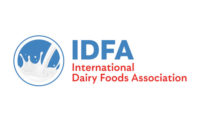Submitted by the International Dairy Foods Association
The National Conference on Interstate Milk Shipments (NCIMS) acted last week to align the Grade “A” Pasteurized Milk Ordinance (PMO) with the regulatory requirements in the preventive controls rule for human food under the Food Safety Modernization Act (FSMA).
The PMO is a set of standards and requirements that regulates all dairy plants producing Grade “A” products, including fluid milk, cream products, yogurt, cottage cheese, eggnog, buttermilk and many dried dairy products. NCIMS, which meets every two years, includes regulators from all 50 states and Puerto Rico and recommends changes and modifications to the PMO for final approval by the Food and Drug Administration (FDA).
IDFA calls NCIMS’ decision ‘a positive solution’
“The big news from the 2017 NCIMS meeting is that we successfully harmonized the PMO with FDA’s “Current Good Manufacturing Practice, Hazard Analysis and Risk-Based Preventive Controls for Human Food” rule, which covers most FDA-regulated foods,” said John Allan, IDFA vice president of regulatory affairs and international standards. “Working together, state regulators, industry stakeholders, FDA officials and experts from academia demonstrated the strength of the NCIMS process to work through difficult issues and come out with a positive solution that advances food safety yet does not overly burden the dairy industry or cash-strapped states.”
IDFA has advocated working through the NCIMS process to leverage the success of the PMO in assuring the safety of Grade “A” products while avoiding duplicative or contradictory regulations on the dairy industry. Prior to this meeting, IDFA met with representatives from the National Milk Producers Federation as well as FDA officials to build consensus on a pair of proposals developed to achieve this alignment. At the conference, NCIMS delegates approved these proposals, which will now go to FDA for final approval.
Controls protect Grade “A” dairy products from potential hazards
The most significant change to the PMO is the incorporation of many of the regulatory requirements of the preventive controls rule into a new Appendix T. These requirements include having a written hazard analysis plan, detailed descriptions of food safety preventive controls that protect Grade “A” dairy products from potential hazards and appropriate testing programs to demonstrate effectiveness of the controls. FDA regulators will conduct inspections every 36 months to ensure compliance with the new Appendix T requirements. The traditional quarterly inspections by state regulators to verify compliance with the main parts of the PMO will continue with some additional checks such as ensuring proper control of allergen-containing ingredients.
NCIMS began the effort to blend the two regulatory systems at its last meeting in 2015, which was just prior to FDA’s publishing of the final preventive controls rule.
The PMO has been developed over many decades, going back to 1924, and is a set of detailed, prescriptive food safety and quality standards. The preventive controls rule is set of general requirements that lay out a framework for food companies to apply when developing comprehensive, risk-based food safety plans specific to their plants.
“The blending of these two complex and sometimes divergent standards has been a very challenging task,” said Allan. “IDFA and its milk processing companies look forward to working with state and federal regulators to assure our plants are prepared for inspections.”
PMO changes will be enacted in 2018
Changes to the PMO will be enacted in the fall of 2018 and inspections for compliance with these new requirements will begin once regulators have completed FDA Grade “A” Preventive Controls training for regulators.
Nearly 100 proposals were considered at the conference. Of those, 37 passed including a proposal to revise the PMO to reflect FDA’s new rule allowing higher levels of Vitamin D 3 in milk to correspond with the new dietary reference value, and a proposal asking FDA to provide greater transparency in the process for evaluating and determining equivalence of milk safety programs in other countries with the PMO and Grade “A” program in terms of overall protection to public health.



